Idea by
Marta Fernández Guardado
https://martafernandezguardado.com
Call for ideas 2021
The Inhabited Type
The Inhabited Type
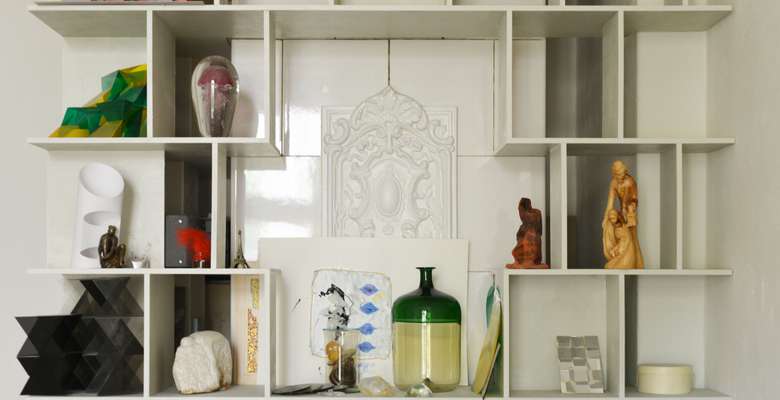
- Site-specific cases
The study defines typology as the knowledge of abstracted forms of preestablished structures that reproduce spatial and social diagrams with regulated sets of values and behaviours. Dwelling typology (re)uses object-types as powerful tools for delivering arrangements flexible enough to allow for an apparent contemporaneity, but that fail to foster new ethical considerations and forms of life. The work problematises the use and balance of design standards in architecture and related fields, and from the small scale, challenges the canonical typological production of housing, as counter-action to the tendency towards shortage, sameness and detachment, precipitated by the extreme commodification of housing and the instrumentalization of domestic meanings for productive ends. By understanding inhabitation as a holistic practice, domestic architecture opens to a more sensitive production, reproduction and renovation.
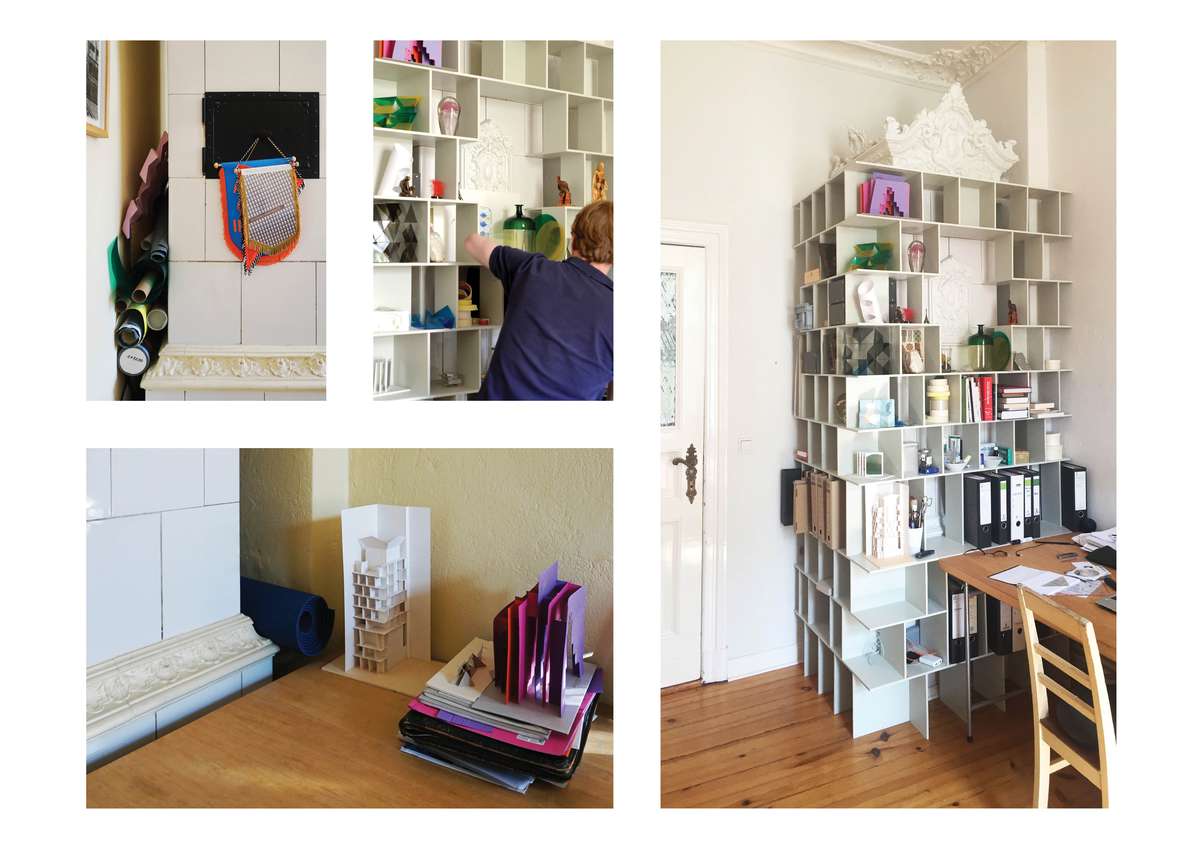
Specific practices of inhabitation are investigated from the scale of the objects and through their relations: first, documenting the idiosyncratic ways that the inhabitants interact among and with them, and then, examining misfits and misuses in which the dwellers’ vices and virtues expand the affordances of the corresponding object-type, along with its inherent logic despite its resistance. As this oven, where things were already being stored and displayed, now with the help of a shelf.

The selected settings are prototypes for the design: through drawing and coding, their forms and functions are processed into new programmatic artefacts –between furniture and room– that confront the space with the practice. Unlike the primary object-type, which aims to order relations and smooth frictions, the singular inhabited type highlights and fixes a mismatch, and thus can trigger the intentional and reciprocal cultivation of alternative forms of dwelling, individually and collectively.
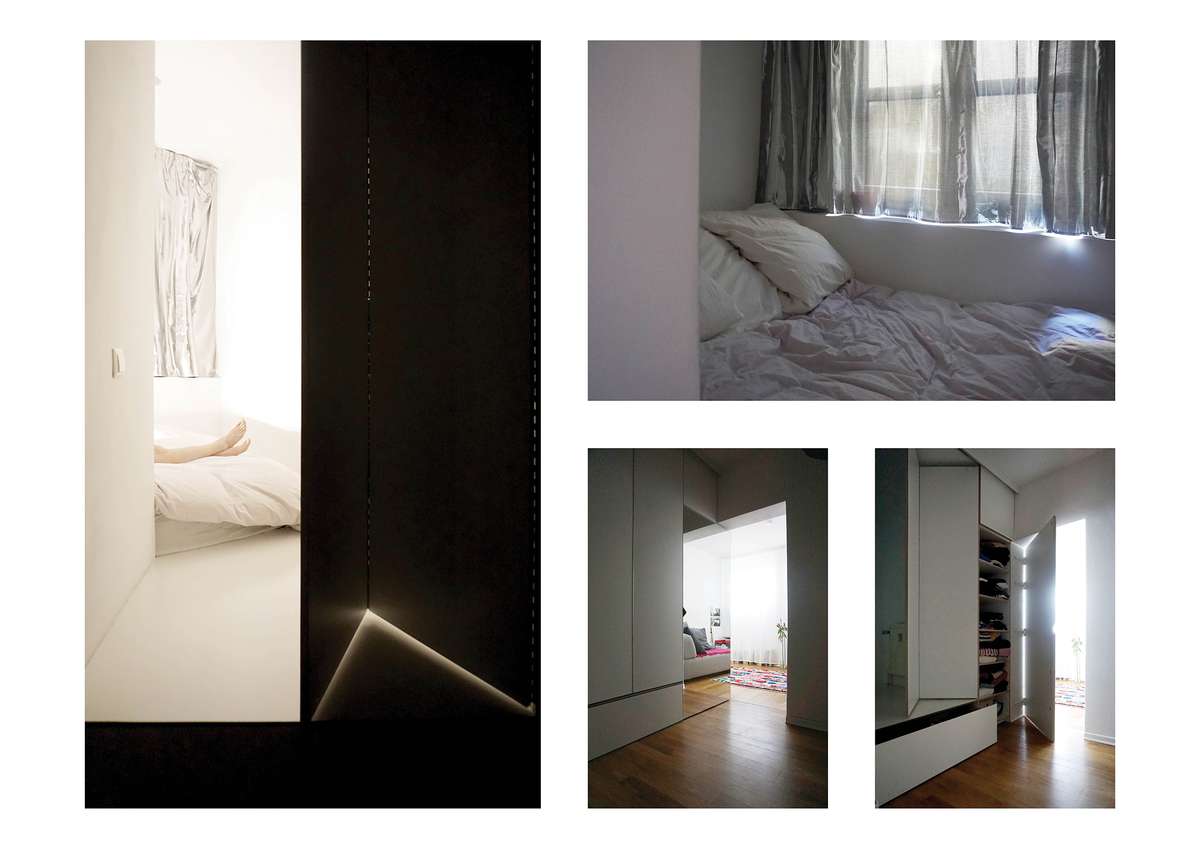
In this case, the documentation of the bed does not suggest its redesign but the reconsideration of its relations to space and other elements. It appears as a horizontal room itself where the inhabitant does all sort of things that can be done elsewhere, but in there, they are experienced differently: as homely. It becomes a walking closet right at the entrance and centre of the apartment, transferring qualities of privacy and exposure. A retreat without withdrawal.

The design process starts with a typological study but subverts it, altering pre-set commands defined by the domestic type and retrofitting it. It encourages the inhabitant to further address new subjective qualities that surely relate to others in similar condition –not by generalization but from the acknowledgment of a diversity of identities and ways of living–, engaging with both what is fixed and what is not.
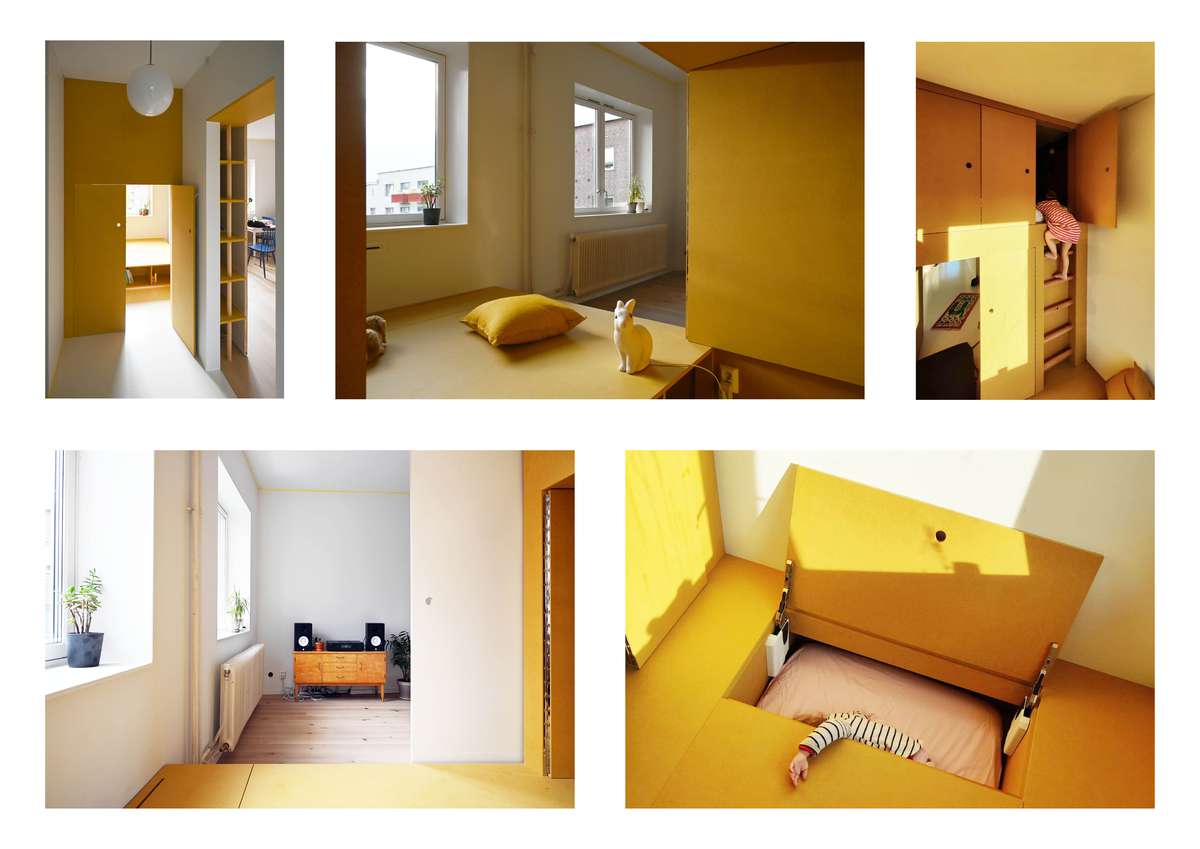
The father's documentation of his child's routines in shared-parenting transforms the entry wardrobe into a new room, a spatial device for conciliating wants and responsibilities among newly-reconfigured family members, with very different needs for independence and care. The stage-like design for a changing domestic scenery was developed remotely during the lockdown, and explores alternative tools and modes for designing and building inhabited types.
The Inhabited Type
The Inhabited Type

- Site-specific cases
The study defines typology as the knowledge of abstracted forms of preestablished structures that reproduce spatial and social diagrams with regulated sets of values and behaviours. Dwelling typology (re)uses object-types as powerful tools for delivering arrangements flexible enough to allow for an apparent contemporaneity, but that fail to foster new ethical considerations and forms of life. The work problematises the use and balance of design standards in architecture and related fields, and from the small scale, challenges the canonical typological production of housing, as counter-action to the tendency towards shortage, sameness and detachment, precipitated by the extreme commodification of housing and the instrumentalization of domestic meanings for productive ends. By understanding inhabitation as a holistic practice, domestic architecture opens to a more sensitive production, reproduction and renovation.

Specific practices of inhabitation are investigated from the scale of the objects and through their relations: first, documenting the idiosyncratic ways that the inhabitants interact among and with them, and then, examining misfits and misuses in which the dwellers’ vices and virtues expand the affordances of the corresponding object-type, along with its inherent logic despite its resistance. As this oven, where things were already being stored and displayed, now with the help of a shelf.
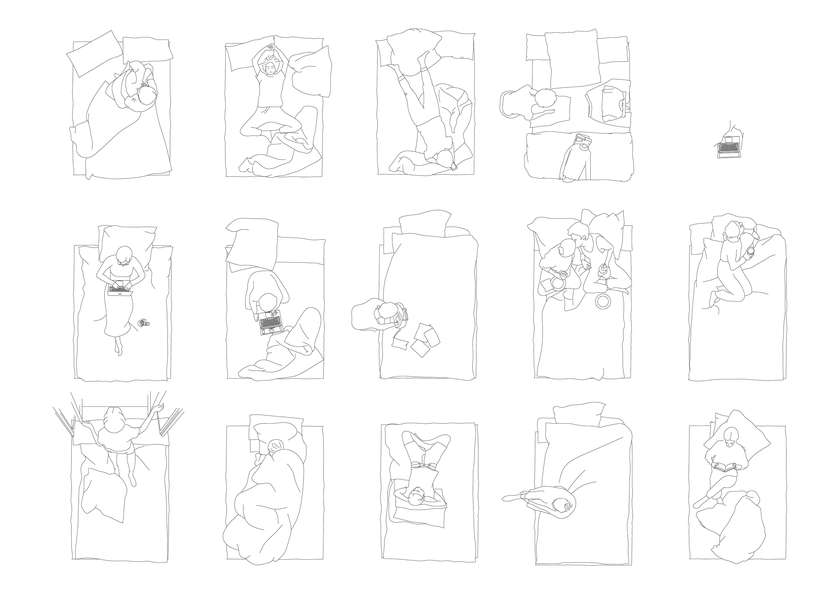
The selected settings are prototypes for the design: through drawing and coding, their forms and functions are processed into new programmatic artefacts –between furniture and room– that confront the space with the practice. Unlike the primary object-type, which aims to order relations and smooth frictions, the singular inhabited type highlights and fixes a mismatch, and thus can trigger the intentional and reciprocal cultivation of alternative forms of dwelling, individually and collectively.
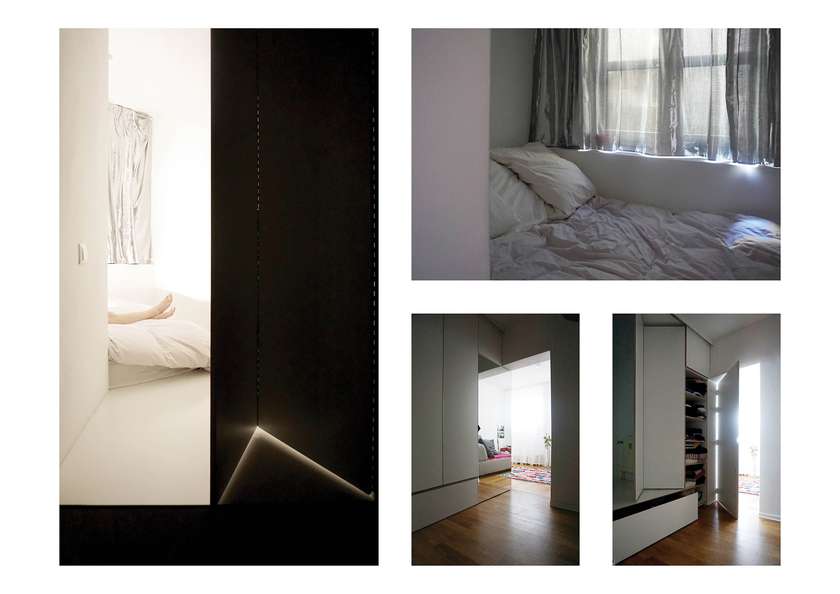
In this case, the documentation of the bed does not suggest its redesign but the reconsideration of its relations to space and other elements. It appears as a horizontal room itself where the inhabitant does all sort of things that can be done elsewhere, but in there, they are experienced differently: as homely. It becomes a walking closet right at the entrance and centre of the apartment, transferring qualities of privacy and exposure. A retreat without withdrawal.

The design process starts with a typological study but subverts it, altering pre-set commands defined by the domestic type and retrofitting it. It encourages the inhabitant to further address new subjective qualities that surely relate to others in similar condition –not by generalization but from the acknowledgment of a diversity of identities and ways of living–, engaging with both what is fixed and what is not.

The father's documentation of his child's routines in shared-parenting transforms the entry wardrobe into a new room, a spatial device for conciliating wants and responsibilities among newly-reconfigured family members, with very different needs for independence and care. The stage-like design for a changing domestic scenery was developed remotely during the lockdown, and explores alternative tools and modes for designing and building inhabited types.